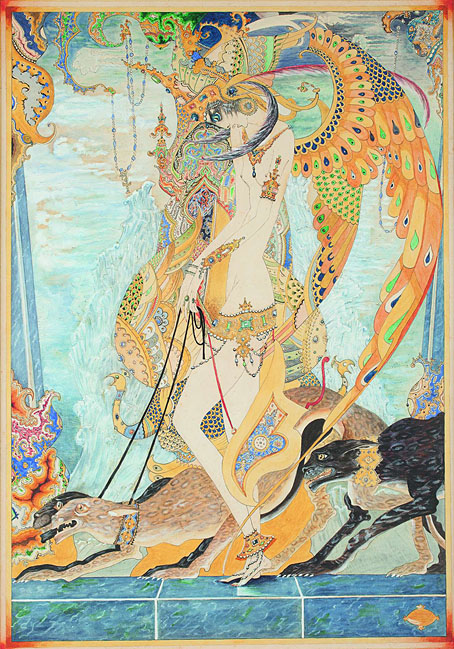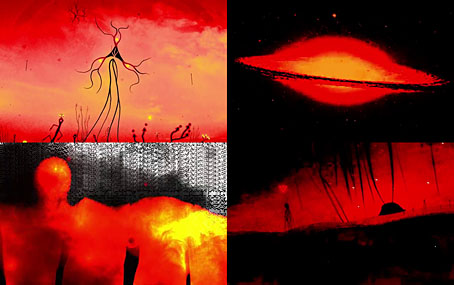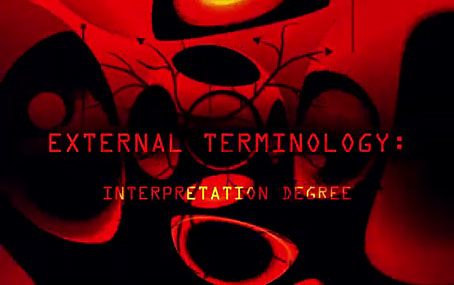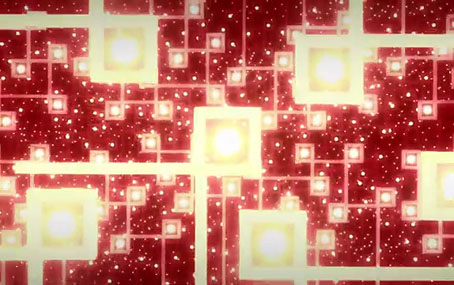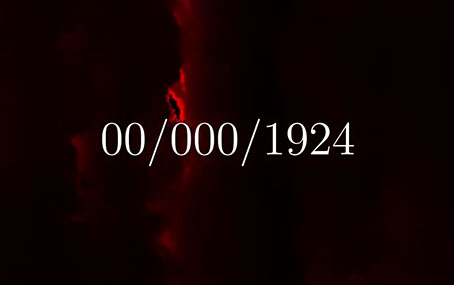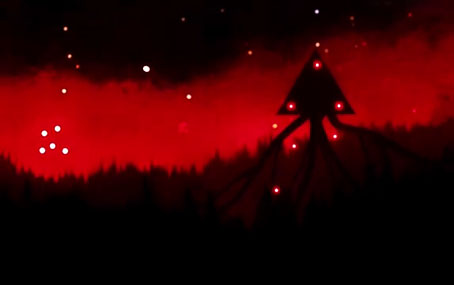Winged Figure (no date) by Mark Severin.
• At Wormwoodiana: News of the publication of two uncollected early stories by Cormac McCarthy. I happen to be reading McCarthy’s penultimate novel, The Passenger, at the moment. Very enjoyable and very different to what I was expecting.
• At Smithsonian Magazine: Yayoi Kusama‘s largest permanent public sculpture arrives in London.
• At Colossal: A futuristic 150-foot installation imagines Chicago’s never-built architecture.
The record sounded like nothing else, seemingly came from nowhere and related to nothing I could identify with any confidence: whistling, whispering, mumbling, pig grunts, exhalations of breath, chants and vocal imitations of nocturnal forest sounds, arco double bass and electric bass, nursery rhymes, impenetrable accents and languages, tambourines, unidentifiable tuned percussion imprecisely struck, mandolin, banjo, flutes, congas, bottleneck guitar, second line drumming with virtually no cymbals, dense percussion, organ bass, harpsichord, reed instruments played through electronic effects and organ lines sounding like anything but themselves. There was no piano, despite what some later commentators have claimed, and in fact very little harmonic underpinning in the majority of tracks. Instead of piano or guitar chords to fill out the ensemble sound there is the celebrated Gold Star echo chamber, into which instruments and voices sank as if dropping away into the abyss.
Zozo la Brique, Jump Sturdy, Coco Robichaux, Queen Julia Jackson, Mama Roux, Tit Alberta—questions flared like fireworks. Who were these characters who populated the lyrics. Were they voodoo practitioners, alive or dead, fictitious or real? Ishmael Reed’s visionary novel, Yellow Back Radio Broke-Down, was published not long after, in 1969. Years later I read it and was startled to bump into Zozo la Brique once more. So these were real people, or named phantoms, or figures of legend at least. “O Doc John,” Reed wrote, “Doc Yah Yah and Zozo Labrique Marie Laveau the Grand Improvisers if I am not performing these rites correctly send the Loa anyway and allow my imagination to fill the gaps.”
David Toop in an extract from Two-Headed Doctor: Listening For Ghosts In Dr. John’s Gris-Gris
• New music: Hidden Structures by Time Being, and Buried (Your Life Is Short) by The Bug.
• At Spoon & Tamago: Minimal and tranquil charcoal drawings by Masahiko Minami.
• New weirdness: Cat Location Conundrum by Moon Wiring Club.
• At Unquiet Things: The art of Dylan Garrett Smith.
• At Dennis Cooper’s: Toshio Matsumoto Day.
• RIP Alain Delon.
• Gris-Gris Gumbo Ya Ya (1968) by Dr John | Gumbo (1971) by Santana | Roochoo Gumbo (1976) by Harry “The Crown” Hosono

